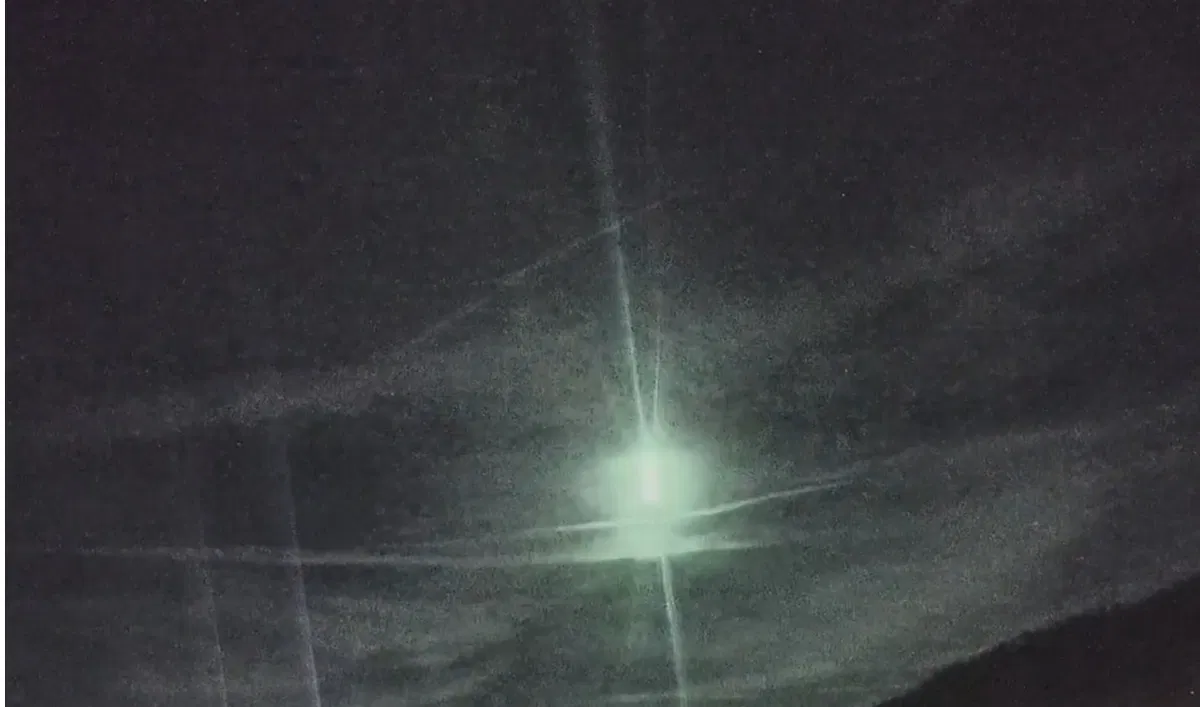Copyright euroweeklynews

A breathtaking flash of light tore across the skies of Spain and Portugal on Sunday, November 2, lighting up the night and stunning anyone lucky enough to be looking up. The spectacular moment was caught on camera by the European Space Agency’s (ESA) meteor detection station in Cáceres, confirming what witnesses across the Iberian Peninsula had already seen – a huge fireball blazing through the atmosphere – Scroll down to see the video at the end of this article. At exactly 20:41 CET, ESA’s AMS82 station, located in Casas de Millán (Cáceres, Spain), captured the event. The monitoring site forms part of ESA’s Planetary Defence Office and the AllSky7 network, which keeps an eye on meteors and bolides across Europe. According to ESA, the brilliant object was travelling northwest over Portugal when it appeared about 97 kilometres above Lousã (Castelo Branco). Moments later, it disintegrated around 43 kilometres above Amiosinho (Coimbra). In that short journey, the meteor covered roughly 80 kilometres, travelling at an incredible 81,000 kilometres per hour before it vanished in a blinding flash. Scientists later confirmed the object wasn’t detected before entering Earth’s atmosphere, meaning the fireball came as a complete surprise — a rare but thrilling reminder of how unpredictable space can be. Scientists say it came from a comet Experts from the Southwestern Europe Meteor Network (SWEMN – IAA-CSIC) have been analysing the footage and believe the fireball originated from a comet. When it entered Earth’s atmosphere, the rock’s surface heated up to several thousand degrees Celsius, creating that intense glowing trail known as a bolide. Just seconds later, it exploded mid-air, producing an extraordinary burst of light caused by the rock fracturing under pressure. The brief explosion was visible from large parts of western Iberia – a flash bright enough to be mistaken for lightning, but with a steady glow that confirmed its cosmic origin. “It’s that split-second rupture that makes a fireball so dramatic,” explained scientists involved in the study. “When the rock breaks apart, the energy release is immense – that’s why it appears to flare so suddenly before vanishing.” While such events aren’t uncommon, capturing one this clearly is rare, and each new sighting provides astronomers with valuable data on how small celestial bodies behave when they collide with our atmosphere. Two meteors, one incredible night As it turns out, Sunday’s fireball wasn’t the only visitor from space that night. About an hour earlier, at 19:42 CET, another meteor had also lit up the Iberian sky for around eight to ten seconds — long enough for people to grab their phones and share the sight online. Despite the close timing, scientists have made it clear that the two meteors were unrelated. Each followed a completely different trajectory, suggesting they came from separate origins. For amateur astronomers and night-sky enthusiasts, the back-to-back celestial displays made for an unforgettable evening. Both fireballs drew attention on social media, with witnesses describing a sudden flash “as bright as the moon” followed by a trail that faded within seconds. ESA’s Planetary Defence Office later confirmed that the Cáceres station recorded both events, providing key footage that will help refine data on meteor paths and potential entry patterns for future objects. A reminder of how alive the night sky really is Events like this serve as a vivid reminder that our planet is constantly crossing paths with small pieces of space debris — most of which burn up harmlessly before reaching the ground. Still, for scientists, each fireball is a treasure trove of information about our solar system’s dynamic environment. Even though no fragments are believed to have survived Sunday’s entry, experts say the data collected will help refine existing models of meteor frequency, composition and origin. For the rest of us, it was simply a stunning natural show – the kind that makes you look up and feel small in the best possible way. As the light faded from the Iberian night sky, the silence that followed carried its own sense of awe. For just a few seconds, the heavens had flared with fire, and ESA’s cameras in Cáceres were there to catch every brilliant moment.



